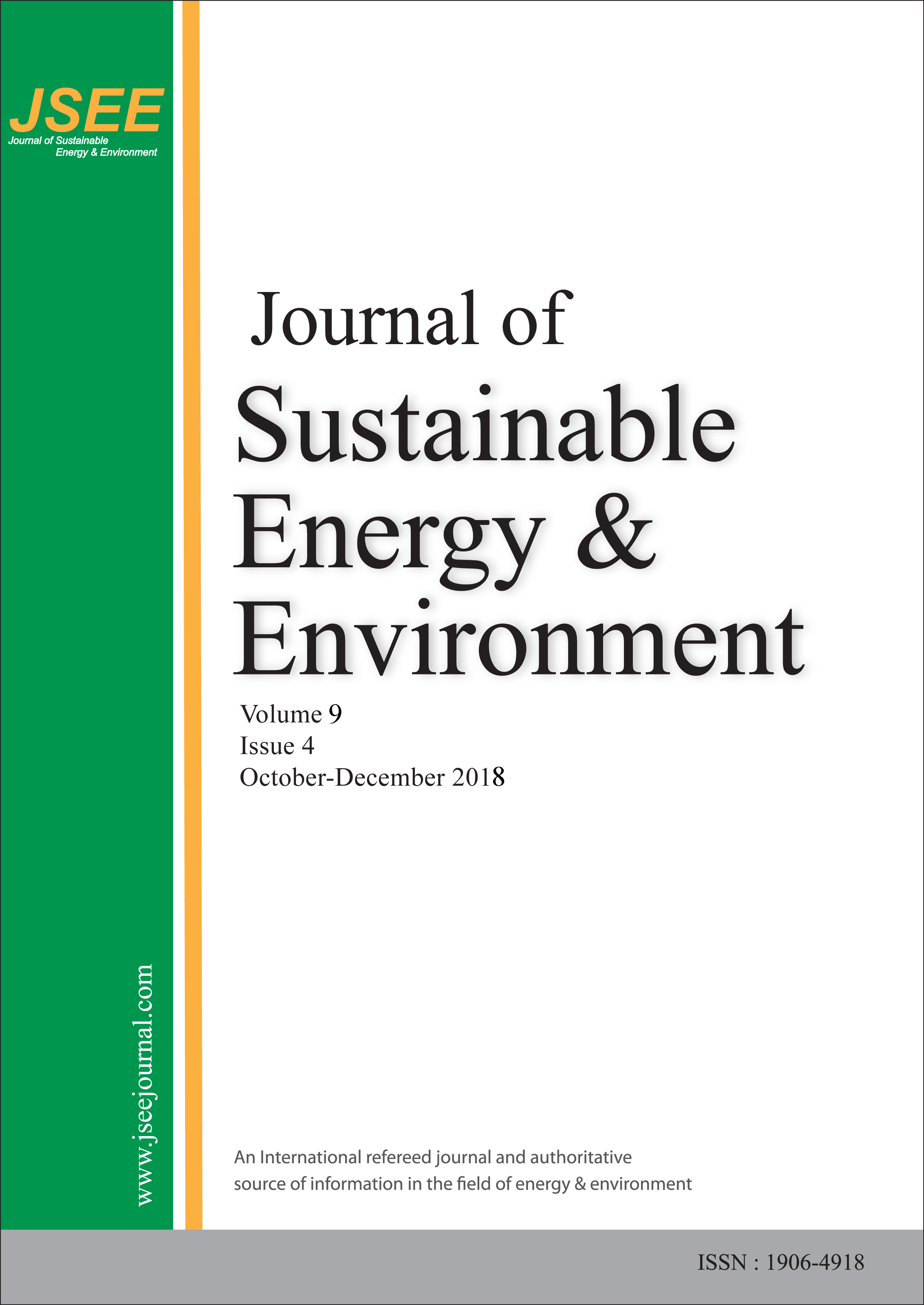
Ruangdet Fugtuan, Janewit Wannapeera, Kouichi Miura and Nakorn Worasuwannarak*
Abstract: A possibility of carbon fiber production by using a novel precursor, a low-molecular-weight compound obtained from a solventtreatment process developed by the authors’ research group, has been examined. This extract, called Soluble, was derived from an extraction of rice straw using 1-methylnaphthalene (1-MN). The Soluble precursors were heated in nitrogen atmosphere at 280-320°C to increase the softening point. Then, they were spun into fiber using a mono-hole spinning machine, and then they were stabilized in air at 300°C and were carbonized at 900°C in nitrogen atmosphere. SEM images of carbon fibers showed that the diameter of the fibers were around 10-15 mm were rather uniform. It was found that at pretreatment of 280°C and 60 min the fiber was non-hollow, whereas the pretreatment at 320°C and 30 min was hollow. These preliminary results showed a good potential for producing carbon fiber from Soluble.
Keywords: Carbon fiber, Biomass, Degradative solvent extraction, Soluble.
Pipat Chaiwiwatworakul
Abstract: It is perceived that daylighting is a potential measure for energy conservation in commercial buildings. To success the measure implementation, comprehensive understanding of local daylight characteristic and selection of appropriate technologies are the key factors. In Thailand, a research-class daylight measuring station was established as part to promote daylighting in the country. This paper reports the investigation results of the daylight availability and sky luminance distribution patterns from the station records. A window system with movable shading slats located between two glazed panes is introduced as an effective solution of the daylight application. The simulation shows that the slat window improves the building envelope performance and reduces substantially the energy consumption from both lighting and air-conditioning.

Navadol Laosiripojana*, Verawat Champreda, Weerawan Laosiriponana and Pornlada Daorattanachai
Abstract: On the basis of Thailand as an agricultural-based country, several types and numerous amounts of agricultural feedstocks (i.e. lignocellulosic biomass, oily plants) are available. The efficient conversion of these feedstocks to high value-added products including biofuels and expensive chemicals (i.e. biomaterial, acid, furan, aromatic and phenolic compounds) would strengthen the national energy security as well as promote the capability of local industrial section. The concept for converting these agricultural resources to biofuels, chemicals and biomaterials is technically known as “biorefinery” process, which is expected to be the platform technology for global sustainable development in the near future. This article provides the technological overview of biorefinery process with an aim to maximize the benefit from biomass conversion to value-added products.
Keywords: Biomass; Biorefinery; Cellulose; Hemicelluloses; Lignin.

Robert H. B. Exell
Abstract: A description of the Research Methodology course is given together with a list of the course contents and their objectives. The course does not aim to teach students how to do research in their special fields; instead it gives them practice in the mathematical, English language, and investigative skills needed for research at a professional level. The students come from a wide variety of backgrounds and have a wide range of abilities. Some of the difficulties they have are mentioned, and it is said that time-consuming individual adviser-to-student coaching is needed to bring the students up to international standards.